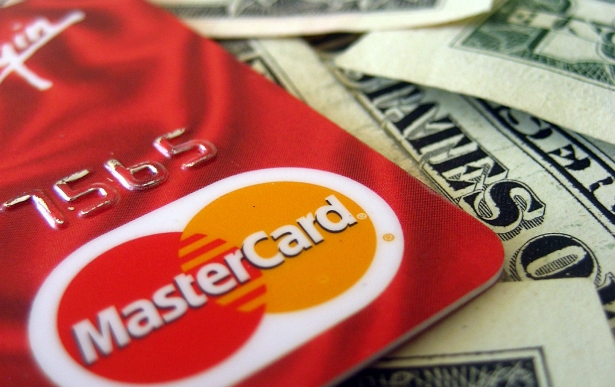One-third of Americans are weighed down by overdue debt, meaning their outstanding payments are in arrears and have been handed off to debt collectors, according to new research from The Urban Institute. That's not a healthy situation for households because overdue debt can lower one's credit score, making it harder to finance purchases such as a home or car while also making it more expensive to borrow money.
The problem is worse in some regions of the country, especially those where health insurance coverage is sparser, incomes are lower and the share of nonwhite households is higher, according to the Urban Institute's data. Almost one in five households have medical debt in collections, a sign of how many Americans struggle with the cost of health care, including those insurance.
That's not only a personal challenge but a community issue because those indebted households may struggle to pay their property taxes or rent on time.
"I don't think people understand how pervasive this is," said Signe-Mary McKernan, a Urban Institute senior fellow and co-director of its Opportunity and Ownership Initiative. "This matters to individuals, but our research shows it matters a great deal to the communities they live in."
She added, "When families have little to no savings and have a disruption, they're more likely to miss bills and get evicted. That's very expensive for cities."
A city's bottom line is linked to the financial health of its residents, who contribute a large slice of municipal revenue through property taxes. An earlier study by the Urban Institute found that cities pay millions to compensate for the financial insecurity of residents. New Orleans alone pays as much as $18 million a year to cover the unpaid bills and evictions of financially struggling families.
Louisiana stands as the state with the highest share of residents with debt in collections, at 46 percent of households, the Urban Institute found. At the opposite end is Minnesota, where about 17 percent of households are in collections.
The causes for that disparity are "complex, and it's a mixture of things," McKernan noted, pointing to Louisiana's "much larger share of nonwhite population," or residents who generally don't benefit from the same privilege and inherited wealth as white Americans. Louisiana is 41 percent nonwhite, while Minnesota is is 19 percent nonwhite.
Incomes also differ considerably, with Minnesotans earning average household income of $83,488. That's 29 percent more per year than the typical household in Louisiana brings home. The patterns hold true for minorities: Nonwhite residents in Minnesota earn an average of $63,239 per year, or about 40 percent more than nonwhite residents in Louisiana.
Higher income, of course, makes it easier to cope with an unexpected bill or emergency. Yet McKernan pointed out that another important part of the debt crisis is health insurance.
"There are 12 percent of residents in Louisiana who do not have health insurance coverage, and only 5 percent in Minnesota," she said.
One lesson she said she takes away from her research is the importance of buying health insurance. Even though older Americans typically have bigger health care expenses than their younger counterparts, it's actually the millennials and Generation X'ers who are most likely to have past-due medical debt.
That may seem counterintuitive, but there's a simple explanation: Americans over 65 years old receive Medicare, the government health care program for older residents.
"You start to look at health insurance coverage rates, and those with Medicare are covered, and it sure makes a difference," she said. "Young people are less likely to have health insurance."
Beyond health coverage, some broader economic issues are also at play in household economics. The cost of health care is surging ahead of income growth, putting a strain on budgets. Many Americans are paying their medical bills with credit cards, which adds to rising levels of household indebtedness, financial site NerdWallet said earlier this month in its annual credit card debt study.
Medical costs have jumped 34 percent over the past decade, compared with income growth of 20 percent, according to NerdWallet's figures. About 27 million US adults are putting medical expenses on their credit cards, which can seem like a simple way to pay the doctor -- unless those consumers are unable to pay off their balance each month. Monthly interest can quickly cause their debt to snowball.
Rather than charging medical expenses, consumers should ask their medical providers if they offer interest-free payment plans, NerdWallet recommends. Flexible spending accounts or health savings accounts can also help defray the cost of medical expenses.
Policymakers and politicians often focus on job creation and generating higher income for their constituents, but the role of wealth and savings shouldn't be overlooked, McKernan said. Having an emergency fund can help families stay one step ahead of debt collectors.
"Wealth isn't just for the wealthy," she said. "Even a small amount of savings can help, even $250 to $750. It's that soft landing in the case of an emergency."
Here are 10 states with the highest share of residents with debt in collections. The national average is 33 percent.
- Louisiana: 46 percent
- Texas: 44 percent
- South Carolina: 43 percent
- West Virginia: 42 percent
- Nevada: 41 percent
- Alabama: 40 percent
- Georgia: 40 percent
- Kentucky: 40 percent
- Mississippi: 40 percent
- New Mexico: 40 percent




Comment: The debt crisis in America continues. See also: